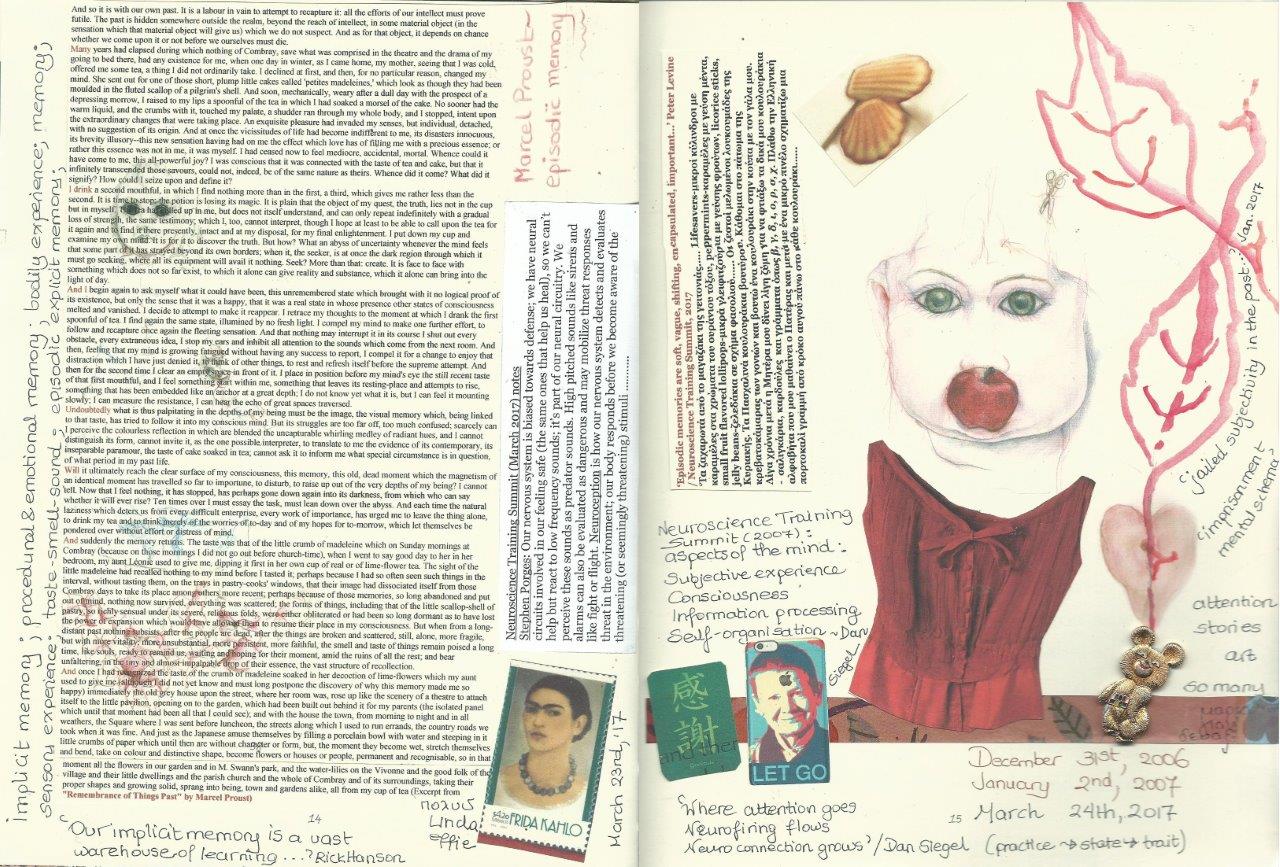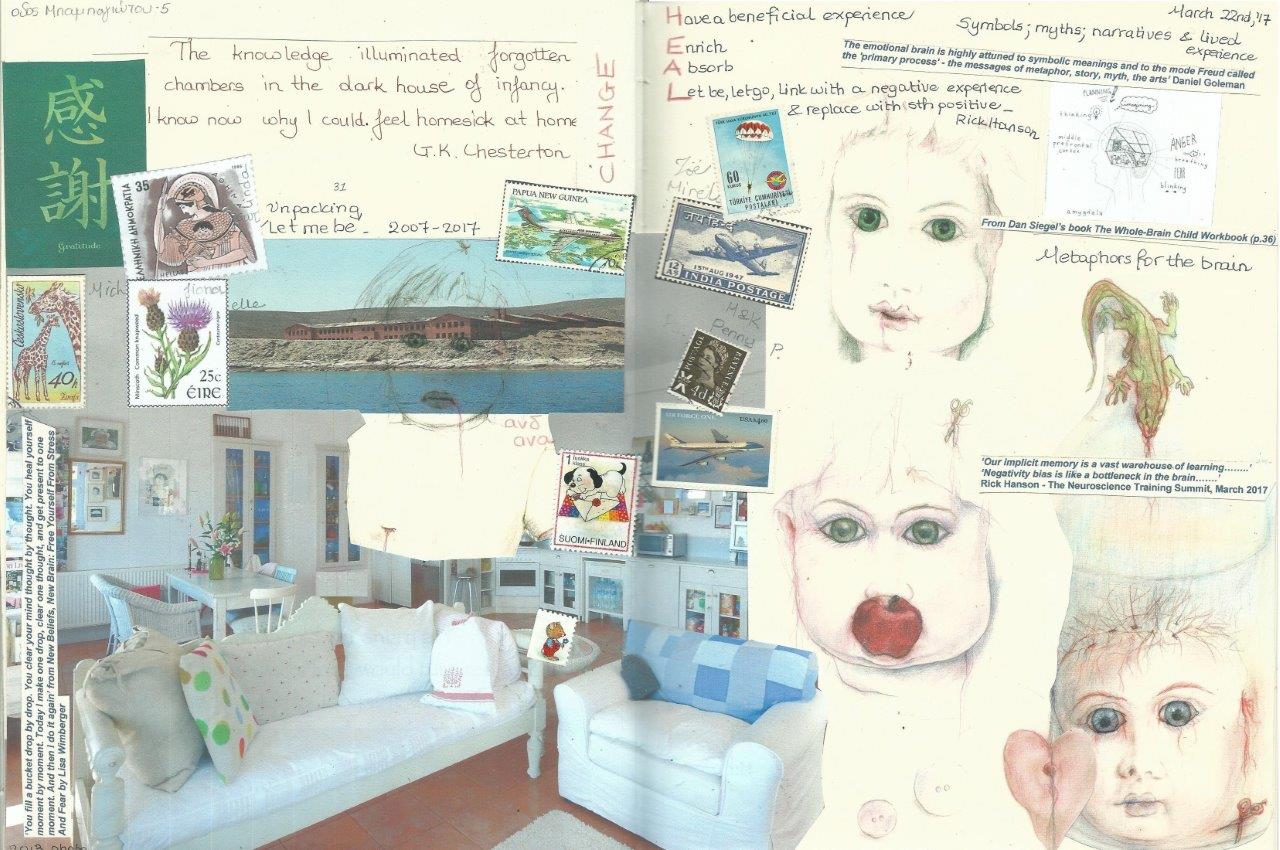Compassion beads………
A Madeleine cookie transported Marcel Proust to an early childhood experience, which resulted in his describing remembering so very beautifully. Often smells, tastes, sounds, touch, but also images and objects can transport us back to past events and experiences. They can trigger pleasant or unpleasant sensations and feelings and can conjure up images and memories. This type of experience or process generated the journal entry on worry beads I posted a few days ago. It was my very personal experience, not an opinion or judgment. A simple description of my letting go of an object that was associated with early negative experience. Today I listened to a talk by James Doty at the Neuroscience Training Summit and I learnt about the compassion beads created by a little girl. Each wooden bead stands for Compassion for self and others, Dignity, Equanimity, Forgiveness, Gratitude, Humility, Integrity, Justice, Kindness and Love. Enjoy the short video at: https://www.youtube.com/watch?v=CSeclA_-qrw

 I’d like to share an intervention or technique Kelly McGonigal discussed in one of the talks at the Neuroscience Training Summit a few days ago. Briefly, she said that when we are considering change in any area of our life we can explore what hinders or prevents us by exploring it. So, she provided the example of her wishing to overcome the fear of flying, for instance. One begins with asking oneself three questions and then asking further questions by exploring the answers to the initial three questions and so on. In her case one of the reasons why she wanted to overcome this anxiety of flying, apart from practical reasons, was to overcome her sometimes feeling trapped on a plane. This led to her remembering another earlier time when she had felt trapped, which was during certain cycling classes when the instructor was shouting at her. I suppose one thing that is happening while engaging with this kind of exercise is that through cognitive processing we may get to understand the roots of our problem or fear and also by naming it we are more likely to tame it. We can also mindfully stay with and investigate the sensations and emotions that rise up in our body as we do this kind of exploration. We are also likely to create associations and get to the root of a fear or difficulty. The interesting thing is that as I was listening to Kelly McGonigal describe this process and her own experience, a memory that I had not considered as especially traumatic popped up. Several years ago I was staying in an inn, in an English village, above a pub, where the entrance and exit door was the pub’s front door. The first morning I tried to exit the pub I realised that I had been locked in and there was no one around. Not only that but it was impossible to open any of the windows. To make matters worse, I had an appointment which I was afraid that I was going to miss. It was only by phoning an acquaintance that the proprietor of the pub was finally contacted and I was, after some time, able to get out. It was during that same trip that I was sick on the flight back home a few days later. I was feeling so bad that I spent the whole flight desperately counting the minutes to get home. These flight memories brought up yet another flight memory when my family and I were flying from the island where we live to Athens. This is a very short 20 minute or so flight and I have flown back and forth countless of times, but on this occasion an employee teacher of mine at the time and her husband were also on the plane. As I was chatting to my employee her husband who was a few seats ahead of us started gasping for air, shouting that we were going to crash. It got pretty dramatic and it kind of left a lingering effect afterwards. Eventually, I found that once I had tapped into situations where I had felt mildly trapped or where my empathic response had kind of overwhelmed me, a more intense memory resurfaced of a childhood surgery procedure, that of the removal of my tonsils as a young child, which I have always considered traumatic in many ways, mainly because of the sensation of being totally immobilized and helpless, and also unable to breathe or swallow with ease. During a subsequent talk at the Neuroscience Training Summit, mentioned above, Peter Levine referred to an a woman, Nancy, who turned white, whose heart beats decreased and who felt as if she were dying during one of his very early sessions. He recalled that it was only after his encouraging her to imagine running and climbing a rock in order to escape from an imaginary tiger that she started breathing with ease and her heart beats increased. It was actually after this imagery technique that she remembered her child self on a surgical bed feeling held down and having great difficulty breathing. People may often not perceive surgical or other medical procedures as traumatic, but they do become bodily procedural and emotional memories. Peter Levine writes that ‘the traumatic aftereffects from prolonged immobilizations, hospitalizations and especially surgeries are often long lasting and severe’ (pp. 53, 54). So we may often be burdened by all sorts of events and experiences that we are unaware of or do not realize their full impact on our current reality; therefore, processing them at a cognitive, but also at a deeper somatic level may shed new light on both our understanding of these experiences and our current responses.
I’d like to share an intervention or technique Kelly McGonigal discussed in one of the talks at the Neuroscience Training Summit a few days ago. Briefly, she said that when we are considering change in any area of our life we can explore what hinders or prevents us by exploring it. So, she provided the example of her wishing to overcome the fear of flying, for instance. One begins with asking oneself three questions and then asking further questions by exploring the answers to the initial three questions and so on. In her case one of the reasons why she wanted to overcome this anxiety of flying, apart from practical reasons, was to overcome her sometimes feeling trapped on a plane. This led to her remembering another earlier time when she had felt trapped, which was during certain cycling classes when the instructor was shouting at her. I suppose one thing that is happening while engaging with this kind of exercise is that through cognitive processing we may get to understand the roots of our problem or fear and also by naming it we are more likely to tame it. We can also mindfully stay with and investigate the sensations and emotions that rise up in our body as we do this kind of exploration. We are also likely to create associations and get to the root of a fear or difficulty. The interesting thing is that as I was listening to Kelly McGonigal describe this process and her own experience, a memory that I had not considered as especially traumatic popped up. Several years ago I was staying in an inn, in an English village, above a pub, where the entrance and exit door was the pub’s front door. The first morning I tried to exit the pub I realised that I had been locked in and there was no one around. Not only that but it was impossible to open any of the windows. To make matters worse, I had an appointment which I was afraid that I was going to miss. It was only by phoning an acquaintance that the proprietor of the pub was finally contacted and I was, after some time, able to get out. It was during that same trip that I was sick on the flight back home a few days later. I was feeling so bad that I spent the whole flight desperately counting the minutes to get home. These flight memories brought up yet another flight memory when my family and I were flying from the island where we live to Athens. This is a very short 20 minute or so flight and I have flown back and forth countless of times, but on this occasion an employee teacher of mine at the time and her husband were also on the plane. As I was chatting to my employee her husband who was a few seats ahead of us started gasping for air, shouting that we were going to crash. It got pretty dramatic and it kind of left a lingering effect afterwards. Eventually, I found that once I had tapped into situations where I had felt mildly trapped or where my empathic response had kind of overwhelmed me, a more intense memory resurfaced of a childhood surgery procedure, that of the removal of my tonsils as a young child, which I have always considered traumatic in many ways, mainly because of the sensation of being totally immobilized and helpless, and also unable to breathe or swallow with ease. During a subsequent talk at the Neuroscience Training Summit, mentioned above, Peter Levine referred to an a woman, Nancy, who turned white, whose heart beats decreased and who felt as if she were dying during one of his very early sessions. He recalled that it was only after his encouraging her to imagine running and climbing a rock in order to escape from an imaginary tiger that she started breathing with ease and her heart beats increased. It was actually after this imagery technique that she remembered her child self on a surgical bed feeling held down and having great difficulty breathing. People may often not perceive surgical or other medical procedures as traumatic, but they do become bodily procedural and emotional memories. Peter Levine writes that ‘the traumatic aftereffects from prolonged immobilizations, hospitalizations and especially surgeries are often long lasting and severe’ (pp. 53, 54). So we may often be burdened by all sorts of events and experiences that we are unaware of or do not realize their full impact on our current reality; therefore, processing them at a cognitive, but also at a deeper somatic level may shed new light on both our understanding of these experiences and our current responses.
